As the US pulls out, the Afghan war enters a brutal phase
After recent Taliban advances, the US pulling out of Afghanistan has lead to more ground engagements and possibly the most brutal phase of this war, writes Susannah George
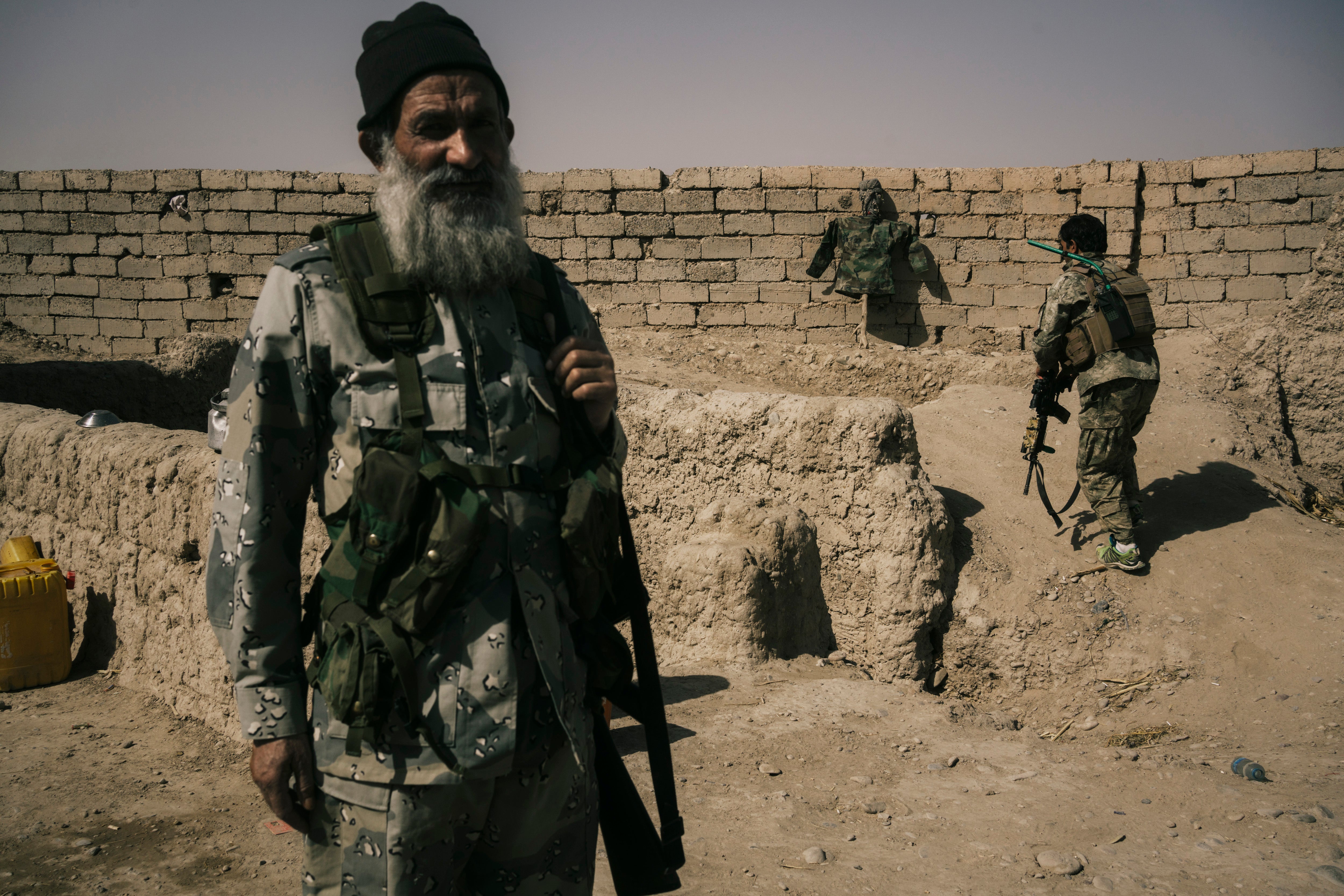
Your support helps us to tell the story
From reproductive rights to climate change to Big Tech, The Independent is on the ground when the story is developing. Whether it's investigating the financials of Elon Musk's pro-Trump PAC or producing our latest documentary, 'The A Word', which shines a light on the American women fighting for reproductive rights, we know how important it is to parse out the facts from the messaging.
At such a critical moment in US history, we need reporters on the ground. Your donation allows us to keep sending journalists to speak to both sides of the story.
The Independent is trusted by Americans across the entire political spectrum. And unlike many other quality news outlets, we choose not to lock Americans out of our reporting and analysis with paywalls. We believe quality journalism should be available to everyone, paid for by those who can afford it.
Your support makes all the difference.The fight between Afghan government troops and the Taliban is entering a more brutal phase of ground engagements, many on the edges of densely populated urban areas, as US forces’ airstrikes wind down.
Last month, to clear pockets of a district just a few hundred yards from the edge of Helmand’s provincial capital Lashkar Gah, Afghan government forces under Gen Sami Sadat moved house to house through tightly packed neighbourhoods, often on foot, as Afghan aircraft carried out waves of heavy strikes.
The area had been densely mined by the Taliban and weeks of clashes left the streets shredded: dirt roads littered with craters and mud-straw walls pockmarked with bullets and shrapnel.
For months, the Taliban slowly expanded its influence across Afghanistan after signing the withdrawal deal with the United States. The halt in offensive US operations, especially airstrikes and raids, allowed the group to mass fighters, gather supplies and chip away at government-held territory.
The country’s south, specifically Helmand, witnessed some of the militants’ most striking advances. By 1 May, the date marking the start of the complete withdrawal of foreign forces from Afghanistan, the Taliban had massed hundreds of fighters in Helmand. And as the US military handed over its last base here to the Afghan government, Taliban fighters launched a massive assault the same day on Lashkar Gah overrunning territory in three districts including Nawa.
While Nawa had fallen to the Taliban several times over the past two decades, residents say the current battle to retake the area is unlike the others before: It has dragged on for weeks rather than days and both sides are using heavier weaponry.
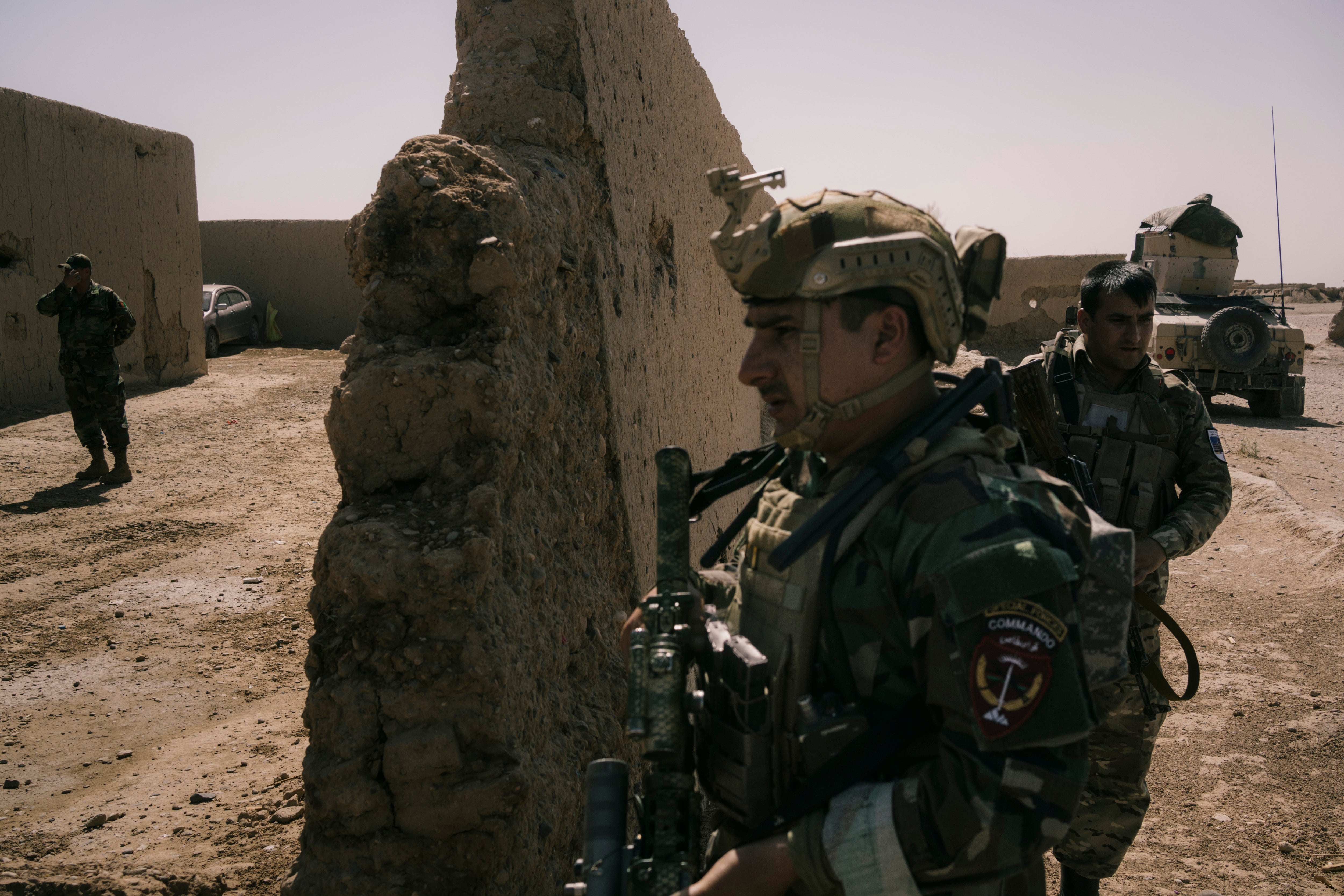
Sadat described one of the most successful raids, which surrounded and killed a unit of about 50 Taliban fighters.
He says: “They were eager to collect the dead, so we kept watch on the area,” recounting that his forces shot several more of the militants as they tried to retrieve bodies.
He says he doesn’t know if any of the Taliban fighters had tried to surrender. “The boys were angry,” he replies, referring to his men. The junior officer who led the operation was promoted to major.
The battle in Helmand could indicate how the war in Afghanistan will evolve once Nato forces completely withdraw. Over the past month, violence has escalated significantly. The Taliban carried out a wave of attacks on provincial capitals, initially triggering a collapse of government forces at several bases and outposts. Now, where the Afghan military is pushing back, both sides are increasingly turning to harsher tactics.
Taliban fighters are blanketing territory with roadside bombs and booby-trapped explosives. And Afghan government forces on the offensive are waging exhausting ground operations covered by intense Afghan air support. Of the eight provinces where the Taliban gained territory last month, the Afghan military has advanced in three: Baghlan in the north, Laghman to the east and in Helmand, around its capital Lashkar Gah.
Where combat has flared, the war’s new phase has proved deadlier for government forces, Taliban fighters and civilians alike.
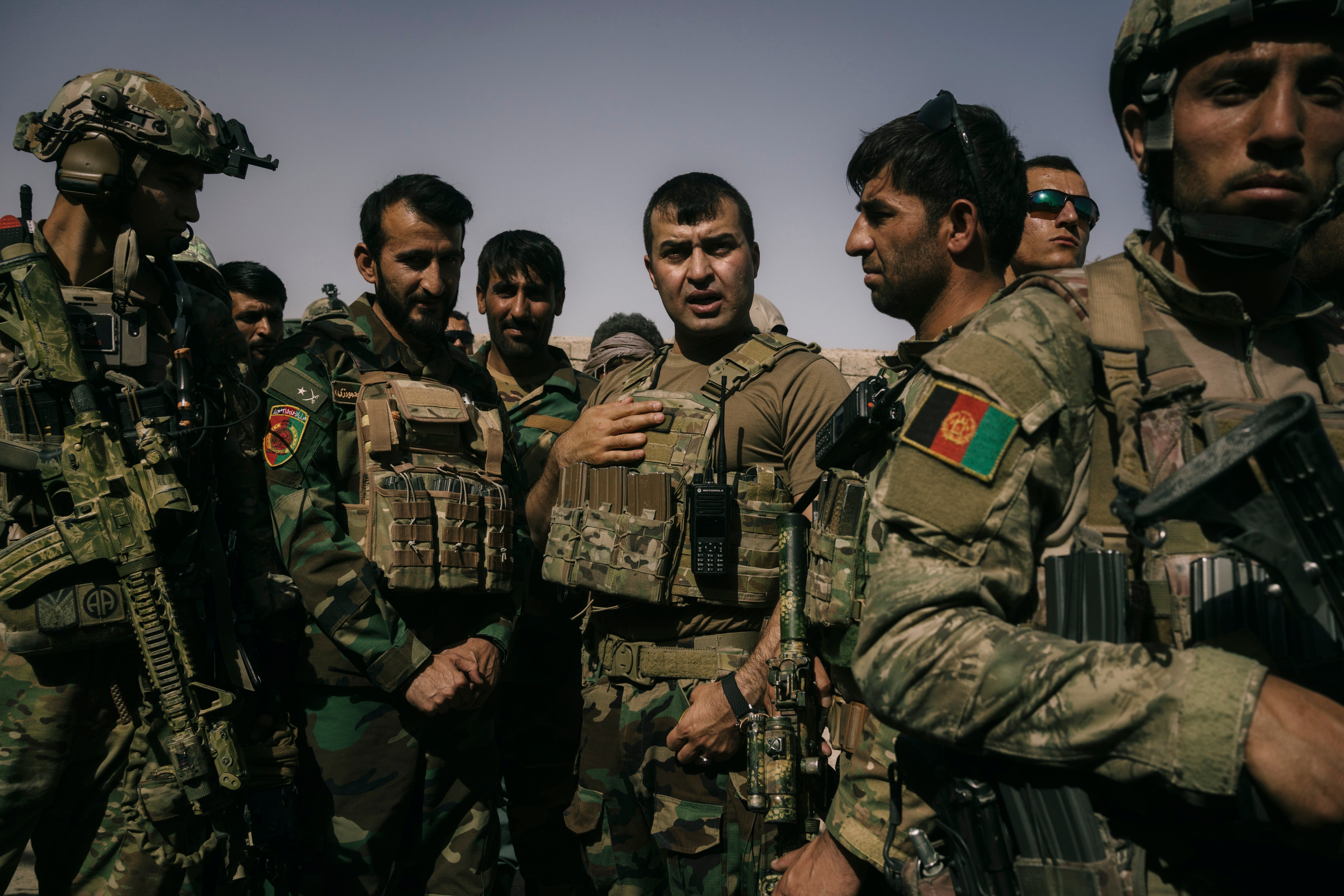
Last month, a woman named Tajbib says the airstrikes in Nawa drew so close to her home that explosions littered her garden with 2ft-long pieces of burning shrapnel. Then, Taliban fighters appeared at her gate and ordered the entire family to leave but the street was in the middle of a battle.
Tajbib, who has a single name and estimates she is in her 30s, says: “We were caught.” She huddled with the women and children of her extended family. After navigating around the fighting, however, the entire family managed to reach the government-held provincial capital on foot.
Families in her neighbourhood say they have fled flighting several times over the years but for many, this was the first time the Taliban forced them from their homes.
When Tajbib returned, she discovered that her neighbourhood had been turned into a Taliban garrison. Passageways were knocked between rooms and houses, smaller holes were punched through walls looking out on the street and tunnels were dug connecting adjacent homes.
Tajbib’s neighbour, in a similar account of being forced from her home by the Taliban, says: “I begged them, ‘Don’t do this,’ but they said, ‘You are the friend of Americans. Get out of here’.” Fearing retribution, she spoke on the condition of anonymity.
As the neighbour, a slight, elderly woman, fled, her son stepped on a roadside bomb. The blast killed him almost immediately, she said, recounting the story in wails of mourning and anger to a group of Afghan soldiers. Her son was one of the family’s main breadwinners and she pleaded for help from the troops to feed her grandchildren.
Civilian casualties were nearly three times higher in May than the month prior. More than 300 civilians were killed and more than 690 injured in May, according to preliminary findings from the Afghan Independent Human Rights Commission. Children accounted for 378 of the civilian casualties in May.
In a series of tweets warning of heavy civilian casualties in recent days, the United Nations said indirect fire, Afghan airstrikes and Taliban explosives are killing many civilians.
The Afghan government does not disclose casualty figures for its forces but local officials said casualties among Afghan troops in Helmand are about twice as high as when the military had close US air support. The officials spoke on the condition of anonymity because they were not authorised to release such information.
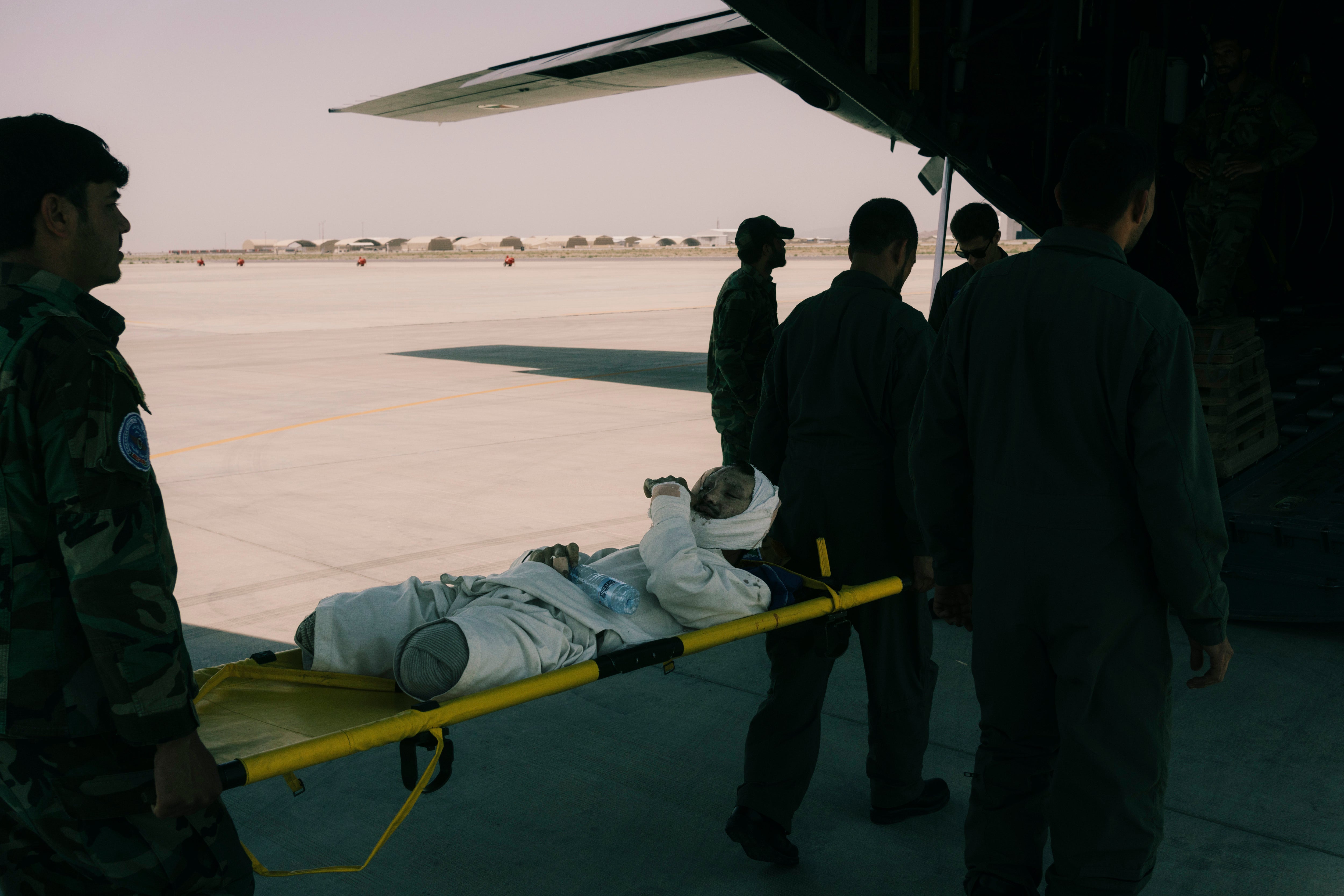
The Taliban is also suffering more losses. Sadat says his men killed or wounded about 700 Taliban fighters in Helmand over the past month. Local officials estimate the number to be closer to 300 but say this was still more than triple the Taliban casualties in previous operations.
When asked about the spike in civilians killed or wounded, US military spokesman Colonel Sonny Leggett, based in Kabul, says: “As we have said before, the best way to reduce civilian casualties is for all sides to reduce the violence.”
When asked about any US role in supporting Afghan forces in Helmand last month, Leggett says, “We have no operational announcements at this time. Our mission is a safe and orderly withdrawal and to leave the [Afghan military] in the best-possible position as we depart.”
But the caliber of the forces that make up the Afghan military is wildly uneven. The vast majority of desertions and casualties suffered by government forces are within units that lack supplies and training. But the country’s elite units – which make up just a fraction of the national security forces – have trained and worked alongside US and Nato special operators for nearly two decades and they display a deep commitment to fighting for their country.
Sadat is the product of some of that elite training. He attended military academies in Germany and Britain, has fought alongside US Special Operations forces and says he will always have deep gratitude for the US-led mission in Afghanistan. “None of this would even exist without the United States,” he said, gesturing to his team of officers, their base and equipment.
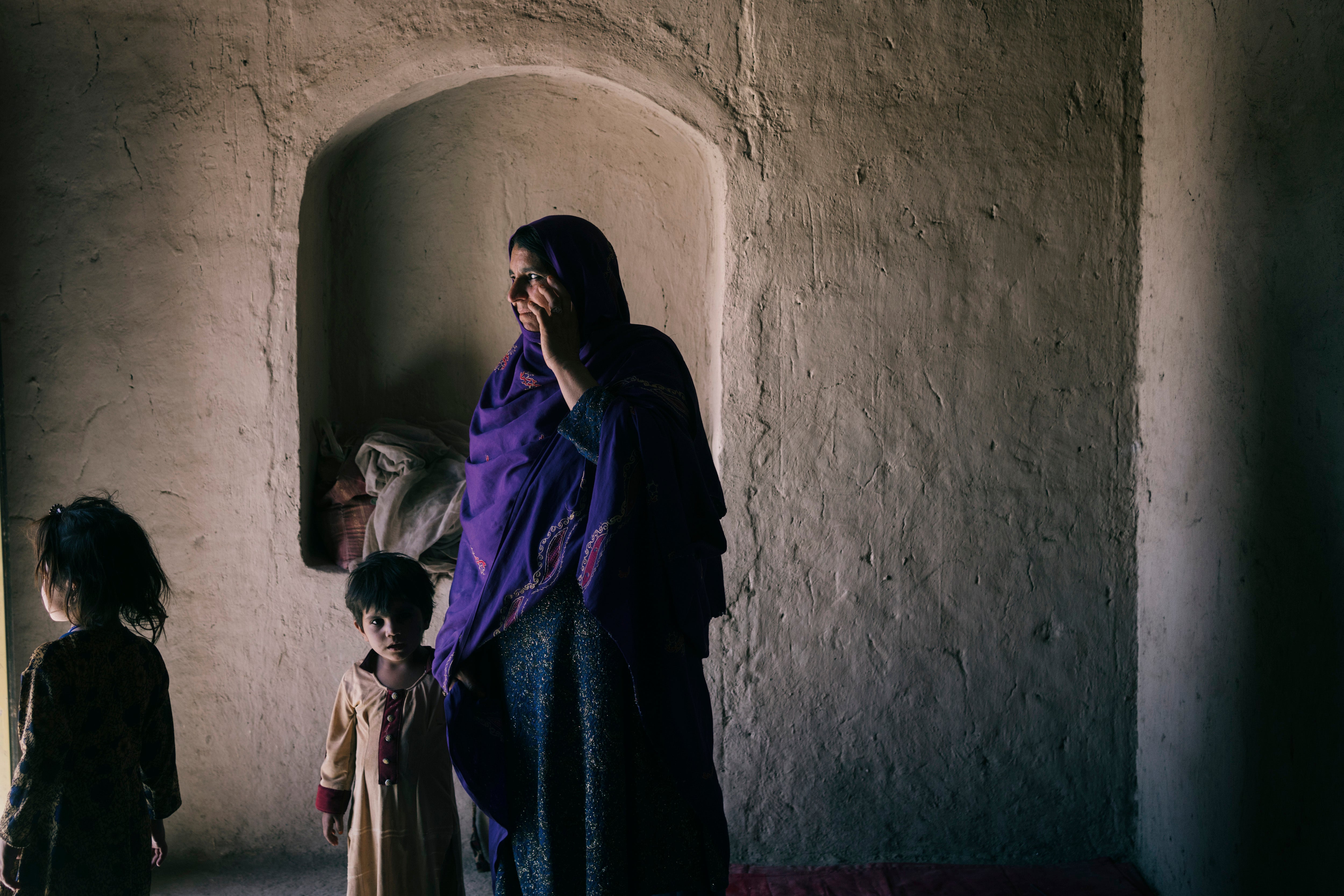
But he sees the withdrawal of foreign forces as an “opportunity” for the Afghan government to fight the Taliban more freely. US support in combat operations had many advantages, he said, but it also added bureaucracy, extensive coordination and many meetings. “We don’t have to do that any more,” he says. “It’s easier now.”
Operating with more independence, Sadat says he is able to empower ground commanders to fight with less US oversight. And with the Afghan air force now conducting the majority of strikes, there are fewer steps to approve and less need to deconflict air support.
Sadat says he plans to accelerate military operations after months of stalled negotiations in Qatar – a period that he argues was used by the militants to strengthen their fighters on the ground. “Let me be clear, we gave a chance to peace, and it didn’t work,” he says.
Ultimately, he said he thinks the Afghan military can be more effective without the presence of US troops and can defeat the Taliban in a matter of years.
US intelligence assessments disagree and instead predict widespread Taliban territorial gains after the complete withdrawal of foreign forces.
Tribal elder Hasham Fedayee from Helmand province also disagrees with Sadat and expects that the rising wave of violence will continue for decades.
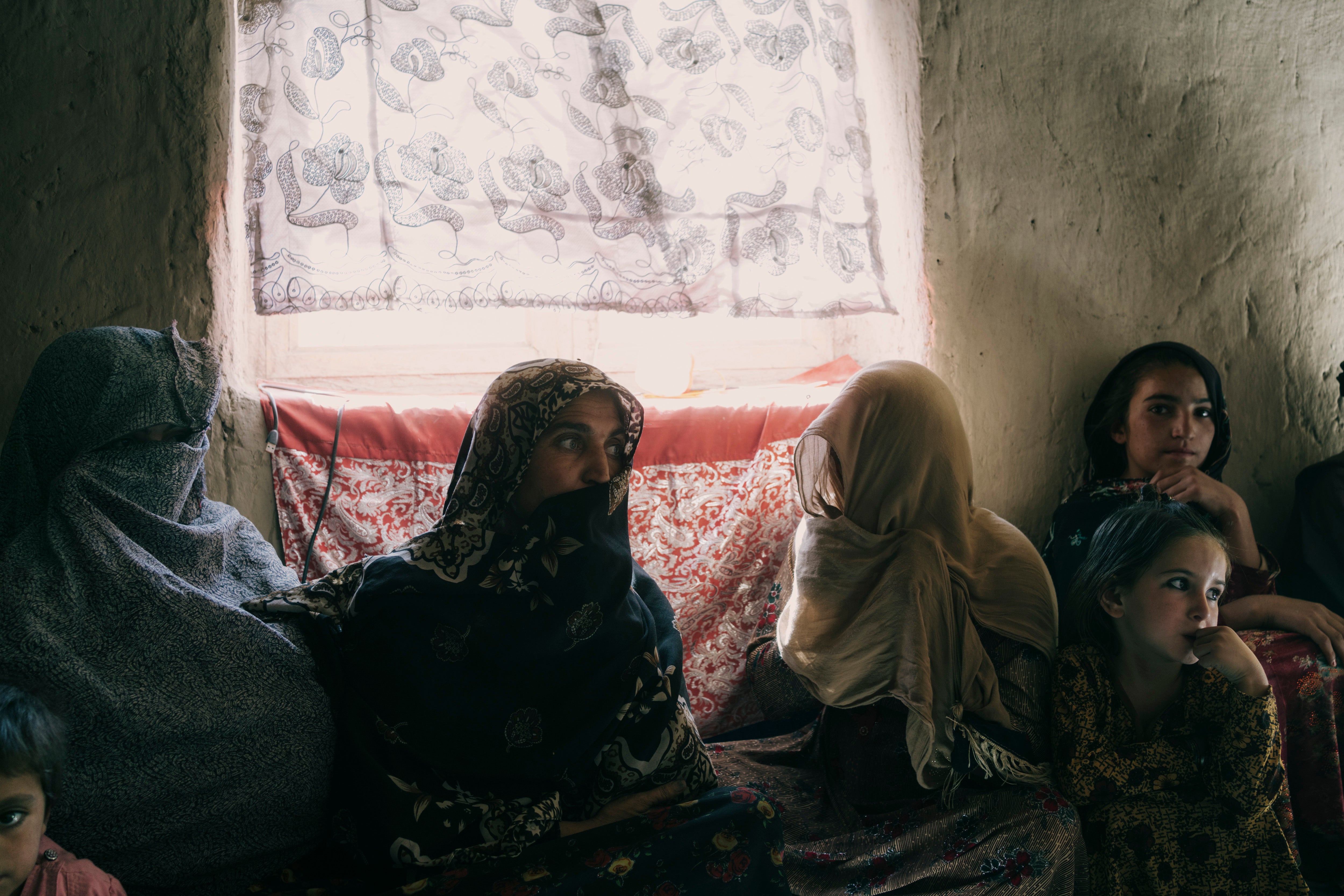
“The war is taking a new turn,” he says, predicting the next stage of the conflict to be “internal” and similar to the years leading up to the outbreak of civil war in the 1970s. “And Afghans will continue to fight [for many years],” he says. “We have already been at war for four decades.
In Nawa, low-level fighting is continuing near Tajbib’s home, although government forces consider the area “cleared”. As she spoke, gunfire sputtered a few hundred yards away and blasts from controlled detonations of roadside bombs send shock waves through her modest front room, thrashing the pastel curtains hanging in the window.
Surrounded by about half a dozen children who appeared unfazed by the noise, she says: “We don’t feel safe but we couldn’t afford the rent in the city.” The children are fine during the day, Tajbib says. But at night when the airstrikes and artillery begin, she adds, they often wake up screaming in terror.
She says she doesn’t understand why the violence is becoming worse now that the US is withdrawing. Without foreign forces in Afghanistan, Muslims should live together in peace, she says.
Tajbib says of the government troops and the Taliban: “Those who are fighting out there. They are brothers.”
The Washington Post’s Aziz Tassal and Sharif Hassan in Kabul contributed to this report.
© The Washington Post
Join our commenting forum
Join thought-provoking conversations, follow other Independent readers and see their replies
Comments